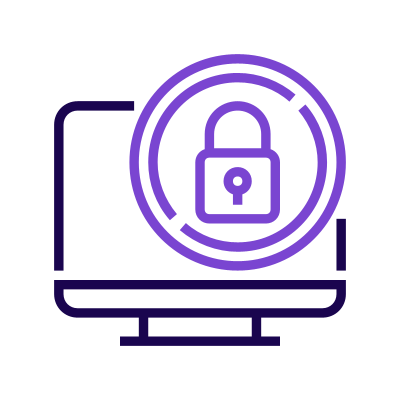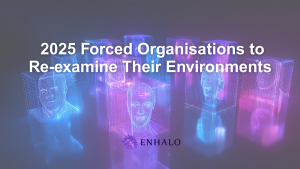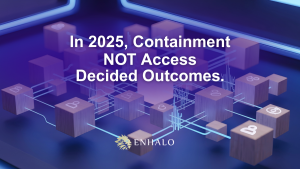If you’ve found yourself here, you’re likely concerned about the security of your digital assets. The NIST Framework can help, and its relevance has been reinforced with the release of version 2.0 earlier this year. This definitive guide will explore the National Institute of Standards and Technology (NIST) Framework’s structured and comprehensive approach to managing cybersecurity risks.
Understanding the Importance of Cybersecurity
In 2024, the digital landscape is more complex and perilous than ever. Cyber attacks are sophisticated, targeting businesses of all sizes and industries. The consequences of a successful cyber attack can be severe, leading to financial loss, reputational damage, and even legal issues.
Cybersecurity protects your information systems, networks, and data from unauthorised access, use, disclosure, disruption, modification, or destruction. It involves various technologies, processes, and practices designed to prevent, detect, and respond to cyber threats. A robust cybersecurity strategy not only safeguards sensitive information but also ensures business continuity and customer trust.
Businesses that prioritise cybersecurity are better equipped to handle the evolving threat landscape. They can identify and respond to potential risks, protect sensitive data, and maintain the integrity of their systems. By investing in cybersecurity measures, you demonstrate your commitment to safeguarding your interests and those of your stakeholders.
Overview of the NIST Framework
The NIST Framework, developed by the National Institute of Standards and Technology, offers a structured approach to managing and enhancing cybersecurity risk management. Created in response to the growing number of cyber attacks, it provides a common language and a set of best practices in the cybersecurity industry. Version 2.0, released in February 2024, has further expanded its scope and relevance.
The NIST Framework is based on industry standards and guidelines, incorporating input from government agencies, private sector organisations, and cybersecurity experts. It offers a flexible and customizable framework that can be adapted to meet different businesses’ unique needs and risk profiles. The NIST Framework consists of three main components: the Core, Implementation Tiers, and Profiles.
The updated NIST Framework 2.0 introduces several enhancements. It includes an added focus on governance and supply chains, reflecting the latest cybersecurity challenges and management practices. This version is designed to apply to a broader range of organisations, from small businesses to large enterprises, regardless of their cybersecurity maturity level.
Core Functions of the NIST Framework
The Core functions are the backbone of the NIST Framework and offer a structured approach to managing cybersecurity risks. Let’s take a closer look at each of these functions:
Identify
This function involves understanding your cybersecurity risks, including the systems, assets, data, and capabilities that need protection. It encompasses asset management, risk assessment, and developing a cybersecurity risk management strategy.
Protect
The Protect function focuses on implementing safeguards to ensure the security of your systems, assets, and data. Activities under this function include access control, awareness training, and data protection.
Detect
This function continuously monitors and detects cybersecurity events to enable timely response and mitigation. It includes anomaly detection, security event monitoring, and incident response planning.
Respond
The Respond function focuses on responding to a detected cybersecurity incident. It includes incident response coordination, communication, and recovery planning.
Recover
The Recover function involves restoring normal operations and services after a cybersecurity incident. It includes recovery planning, improvements based on lessons learned, and ensuring critical systems and data resilience.
Govern
Newly added in version 2.0, this function emphasizes the importance of governance in cybersecurity, highlighting how decisions on cybersecurity strategy should align with broader enterprise risk management.
Each of these functions is interconnected and plays a crucial role in managing cybersecurity risks effectively. Addressing each function and implementing the corresponding activities can enhance your cybersecurity posture and mitigate potential risks.
Implementing the NIST Framework: A Step-by-Step Guide
Assessment
The first step is to assess your cybersecurity posture. Evaluate your existing security measures, policies, and procedures. Identify areas that require improvement and prioritise your cybersecurity efforts. Involving key stakeholders from various departments is crucial to consider all relevant perspectives.
Alignment
Once you’ve assessed your cybersecurity posture, align your strategy with the NIST Framework. Map your existing security measures and practices to the framework’s core functions and categories. Identify gaps or areas where you may not fully comply with the framework and address them by implementing additional security measures or modifying existing ones.
Implementation
Implement the necessary changes and improvements. This involves deploying new security measures, modifying existing policies and procedures, and training employees on cybersecurity best practices. Ensure the implementation process is well-documented and communicated to all relevant stakeholders.
Monitoring and Evaluation
Regularly assess the effectiveness of your security measures, identify new risks or vulnerabilities, and adjust your cybersecurity strategy accordingly. Conduct regular security audits, perform penetration testing, and stay updated with industry trends and best practices.
Continuous Improvement
Cybersecurity threats constantly evolve, and staying ahead requires ongoing vigilance. Stay updated with the latest industry trends, attend cybersecurity conferences and training programs, and actively seek feedback from employees and stakeholders.
Measuring Your Progress with Implementation Tiers
The Implementation Tiers provide a way to assess your current cybersecurity capabilities and determine your progress in implementing the NIST Framework. There are four tiers: Partial, Risk-Informed, Repeatable, and Adaptive.
- Partial (Tier 1): Represents businesses that have not yet established a formal cybersecurity program and are unaware of their cybersecurity risks.
- Risk-Informed (Tier 2): Represents businesses with a basic cybersecurity program in place but lack the ability to assess and respond to cyber threats fully.
- Repeatable (Tier 3): Represents businesses that have established a formal cybersecurity program and follow consistent processes and procedures.
- Adaptive (Tier 4): Represents businesses with a mature and dynamic cybersecurity program that can adapt to evolving threats and risks.
Building a Resilient Cybersecurity Strategy with the NIST Framework
The updated version 2.0, with its emphasis on governance and supply chains, provides a comprehensive roadmap for managing cybersecurity risks. By integrating its core functions into your operations, you can effectively identify, protect, detect, respond to, and recover from cyber threats.
Take a Structured Approach
Start by gathering your team for an in-depth review of your current cybersecurity measures – your existing policies, practices, and technology to pinpoint any vulnerabilities lurking beneath the surface. This thorough assessment acts like a health check for your digital environment, revealing areas that need fortification.
By taking these steps, you’re not just complying with standards but building a resilient fortress against cyber threats. It’s about creating an environment where security is embedded in the very fabric of your operations, ensuring that your organisation can withstand and recover from any cyber attack.
Monitor and Evaluate
Regular security audits and staying abreast of the latest cyber threats enable you to adapt swiftly. The NIST Framework’s emphasis on continuous improvement ensures that your cybersecurity measures evolve in response to new challenges.
As cyber threats become more sophisticated, continuous improvement becomes critical. By committing to ongoing enhancement of your cybersecurity strategies, you can stay ahead of threats and secure your digital assets effectively.
Embrace the NIST Framework to build a resilient cybersecurity strategy that adapts and grows stronger over time.







